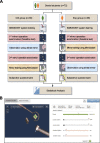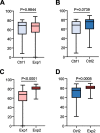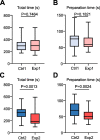Mirror training device improves dental students' performance on virtual simulation dental training system
- PMID: 37149587
- PMCID: PMC10163732
- DOI: 10.1186/s12909-023-04300-6
Mirror training device improves dental students' performance on virtual simulation dental training system
Abstract
Introduction: Clinical practice of dentistry entails the use of indirect vision using a dental mirror. The Mirrosistant is a device that helps dental students become proficient with use of indirect vision mirror operation. This study aimed to explore the role of the Mirrosistant on students' performance with the virtual simulation dental training system.
Materials and methods: A total of 72 dental students were equally assigned to the Control group and the Experimental group. Subsequently, Mirrosistant was used to conduct a series of mirror training exercises in the Experimental group. The training consisted of tracing the edge and filling in the blank of the prescribed shape, as well as preparing the specified figure on raw eggs using indirect vision via Mirrosistant. Next, both groups were examined using the SIMODONT system, a virtual reality dental trainer, for mirror operation. In addition, a five-point Likert scale questionnaire was used to assess student feedback by using Mirrosistant.
Results: The mirror operation examination conducted by the SIMODONT system revealed that mirror training using Mirrosistant had statistically improved students' performances (score: 80.42 ± 6.43 vs. 69.89 ± 15.98, P = 0.0005) and shorten their performance time of mirror operation (time of seconds: 243.28 ± 132.83 vs. 328.53 ± 111.89, P = 0.0013). Furthermore, the questionnaire survey indicated that the participants had positive attitudes toward the mirror training using Mirrosistant. Most students believed that the mirror training device could improve their perceptions of direction and distance, as well as their sensations of dental operation and dental fulcrum.
Conclusion: Mirror training using Mirrosistant can enhance dental students' mirror perceptual and operational skills on virtual simulation dental training system.
Keywords: Dental mirror; Dental students; Hand skill; Indirect vision; Mirror training; SIMODONT system; Virtual simulation dental training system.
© 2023. The Author(s).
Conflict of interest statement
The authors declare no competing interests.
Figures






Similar articles
-
Virtual Reality as a novel educational tool in pre-clinical paediatric dentistry training: Students' perceptions.Int J Paediatr Dent. 2020 Nov;30(6):791-797. doi: 10.1111/ipd.12648. Epub 2020 May 4. Int J Paediatr Dent. 2020. PMID: 32274838
-
Effectiveness and Methodologies of Virtual Reality Dental Simulators for Veneer Tooth Preparation Training: Randomized Controlled Trial.J Med Internet Res. 2025 May 22;27:e63961. doi: 10.2196/63961. J Med Internet Res. 2025. PMID: 40402564 Free PMC article. Clinical Trial.
-
Effectiveness of haptic feedback devices in preclinical training of dental students-a systematic review.BMC Oral Health. 2023 Oct 10;23(1):739. doi: 10.1186/s12903-023-03410-3. BMC Oral Health. 2023. PMID: 37817151 Free PMC article.
-
[Effect of digital virtual simulation system for preclinical teaching of access and coronal cavity preparation].Zhonghua Kou Qiang Yi Xue Za Zhi. 2021 May 9;56(5):479-484. doi: 10.3760/cma.j.cn112144-20200831-00485. Zhonghua Kou Qiang Yi Xue Za Zhi. 2021. PMID: 33904284 Clinical Trial. Chinese.
-
Computer simulation and virtual reality in undergraduate operative and restorative dental education: A critical review.J Dent Educ. 2020 Jul;84(7):812-829. doi: 10.1002/jdd.12138. Epub 2020 Mar 8. J Dent Educ. 2020. PMID: 32147841 Review.
Cited by
-
Comparing digital real-time versus virtual simulation systems in dental education for preclinical tooth preparation of molars for metal-ceramic crowns.BMC Oral Health. 2025 May 27;25(1):814. doi: 10.1186/s12903-025-06161-5. BMC Oral Health. 2025. PMID: 40426144 Free PMC article.
References
MeSH terms
Grants and funding
- JX2019Y09/Educational Research Project of the Stomatological College in Nanjing Medical University
- 2021ZD021, 2021ZC061, 2021YJS-ZC044/Educational Research Project of Nanjing Medical University
- 2021ZD021, 2021ZC061, 2021YJS-ZC044/Educational Research Project of Nanjing Medical University
- 2021JSJG344/Educational Research Project of Higher Education in Jiangsu Province
- 2021JSJG344/Educational Research Project of Higher Education in Jiangsu Province
LinkOut - more resources
Full Text Sources

